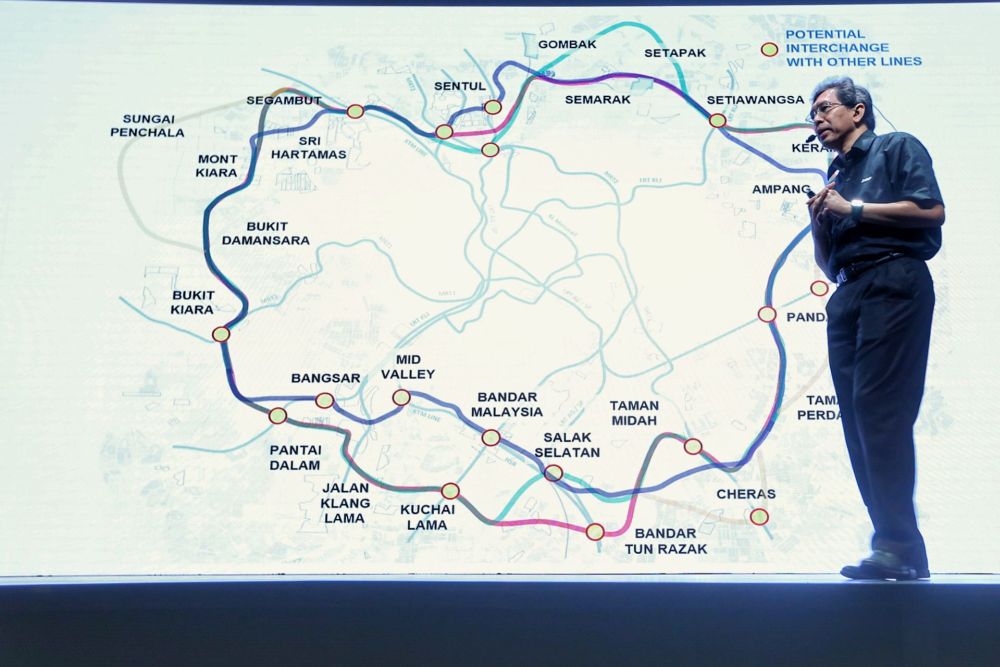.jpg)
Subscribe to our Telegram channel for the latest updates on news you need to know.
KUALA LUMPUR, 13 April — MRT Corp said today the third “circle” line will double up as a game-changing project for the construction industry and urban development, with massive infrastructure plans that would include affordable housing and transit-oriented development.
The ambitious project could involve over 30 new stations that would link it to the Kajang-Sungai Buloh and the Putrajaya lines, the latter expected to be fully operational by 2023.
MRT Corp chief executive Mohd Zarif Mohd Hashim said the third line to encircle and cover densely populated areas throughout the Klang Valley would have “trickle down effects” to spur economic growth, urban regeneration and ease traffic congestion.
“We want the multiplier effect,” he told a media briefing on the project at Menara Ken, Taman Tun Dr Ismail here.
The Mass Rapid Transit Line 3 project, part of a public transport master plan drawn by the Najib administration, was initially deferred indefinitely over funding concerns.
But Transport Minister Datuk Seri Wee Ka Siong announced last week that the government has decided to restart it, raising questions if Putrajaya would have the fund to finance after spending up to RM40 billion in direct fiscal relief in a bid to stem the effects of Covid-19.
Prime Minister Tan Sri Muhyiddin Yassin reportedly said the federal government’s coffers have been thinned out to prop up the economy and help Malaysians in the Covid era.
Mohd Zarif said MRT Corp is looking to adopt a “hybrid” funding system that would draw partial financing from the private sector.
“The government is prepared to fund this project but they are also giving an opportunity for MRT Corp to come up with our own private funding proposal,” he told the briefing.
“Right now, we are looking at a hybrid model. The project is reliant on government support, but we are trying to help the government.”
The third line will also see total participation of local firms. Mohd Zarif said MRT Corp aims to use the project as a catalyst to spur the local supply chain and construction players through a “industry development” tender system.
Contracts would be awarded based on technological adoption, among others, including the use of Industrialised Building System and Building Information Modelling, modern construction techniques said to be faster and more sustainable.
IBS is also seen as a way to reduce foreign worker dependency by making construction easier and safer, which could increase its appeal among local labourers according to Mohd Zarif.
The construction industry is one of the biggest employers of foreign workforce next to plantations.
“If the materials are built in the factories then locals wouldn’t find it as difficult,” he said.
IBS adoption in private sector development in the country is still low, at just 15 to 35 per cent according to Construction Industry Development Board data.
Putrajaya has given the MRT operator a three month deadline to finalise the alignment for the circle line.
Mohd Zarif told the briefing that the current proposal would cover densely populated residential areas that are left out of existing rail systems such as Ampang, Pantai Dalam, Jalan Klang Lama, Bandar Tun Razak, and Cheras.
He said the government is mulling new affordable housing projects in these areas or improving existing ones.

